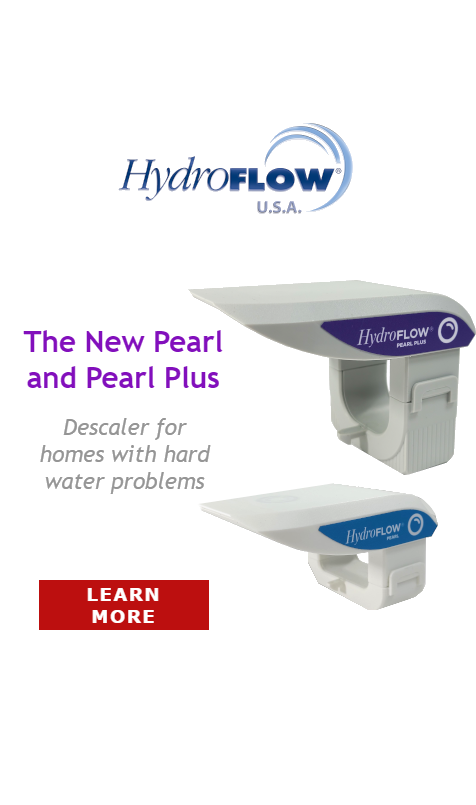Connecticut
Average Groundwater Temperatures for the Cities in Connecticut
Temperature is important to consider when dealing with hard water because calcium dissolves more easily in cold water. Most substances that dissolve in water, such as sugar, do not behave in this manner. It is common knowledge that you can dissolve more sugar in hot water than cold. Calcium has the opposite effect: the hotter the water, the less calcium it can dissolve. If your water source is deep in the earth (higher pressure also contributes to increased calcium solubility) and the groundwater is very cold, you can almost certainly expect hard water. Groundwater is so hard in some areas that water utilities must blend it with surface water to reduce the hardness. If you would like more information on the hard water levels in your area please see our hard water map.
Another important reason to know your average groundwater temperatures is if you are trying to determine which tankless water heater to purchase. The reason for this is because in colder climates the groundwater starting temperature is colder than in warmer climates. This causes the tankless water heater to work harder to increase the water temperature in colder climates, which in turn causes the flow rate to decrease in parallel. For example, if the starting water temperature is 52°F and you need to raise the water temperature to 110°F. Then your tankless water heater must be able to raise the temperature of the water by 58°F while still providing adequate flow to support the fixtures you wish to run at the same time.
How Flow Rates are Affected by Temperature
In the example below, you can see the impact that temperature has on flow rates. This example is based on a tankless water heater that has a flow rate rated for 8 GPM.
| Temperature Zone | Efficiency |
|---|---|
| +71 °F | 100% (8 GPM) |
| 61 – 70 °F | 73% (5.8 GPM) |
| 51 – 60 °F | 58% (4.6 GPM) |
| 41 – 50 °F | 48% (3.8 GPM) |
| < 40 °F | 41% (3.2 GPM) |

Based on the corresponding flow rates for each appliance that are listed. A tankless water heater that is rated with a flow rate of 8 GPM (gallons per minute) is capable of running these items at the same time in regions with an average groundwater
temperature of 72°F.
Shower = 3 GPM
Kitchen Sink = 1.5 GPM
Washing Machine = 2.5 GPM
Total = 7 GPM
If you take this same exact tankless water heater and install it in a region that has an average groundwater temperature of 52°F (green zone). This will lower that tankless water heater's max GPM output to 4.64 GPM.
Shower = 3 GPM
Kitchen Sink = 1.5 GPM
Total = 4.5 GPM
As you can see before purchasing a tankless water heater it's important to know the impact temperature has on its ability to heat water and its effect on the total GPM needs of your household.
Connecticut Groundwater Temperature Yearly Average
| City and Zip Codes | Groundwater Temperatures |
|---|---|
Bridgeport 80928 | 80929 | 80930 | 80938 | 80939 | 80951
| 46°F |
New Haven 06510 | 06511 | 06513 | 06515 | 06519
| 45°F |
Hartford 06103 | 06105 | 06106 | 06112 | 06114 | 06120 | 06160 | 47°F |
Waterbury 06702 | 06704 | 06705 | 06706 | 06708 | 06710
| 46°F |
Milford 06460 | 06461 | 48°F |
Torrington 06790 | 43°F |
Willimantic 06226 | 47°F |
What Tankless Water Heater Should you Buy if you Live in Connecticut?
Since Connecticut's average temperature range is between 45°F and 48°F. It is recommended that you select a light blue zone Tankless Water Heater. To see the recommended Tankless Water Heaters that apply to the light blue and green zone temperatures please follow the link that corresponds to the region of your average city temperature.
| Temperature zone | Recommended Tankless Water Heater |
|---|---|
| < 40 °F | Tankless Water Heater Recommendations |
| 41 – 50 °F | Tankless Water Heater Recommendations |
| 51 – 60 °F | Tankless Water Heater Recommendations |
| 61 – 70 °F | Tankless Water Heater Recommendations |
| +71 °F | Tankless Water Heater Recommendations |
For more information, please contact HydroFLOW Northeast


